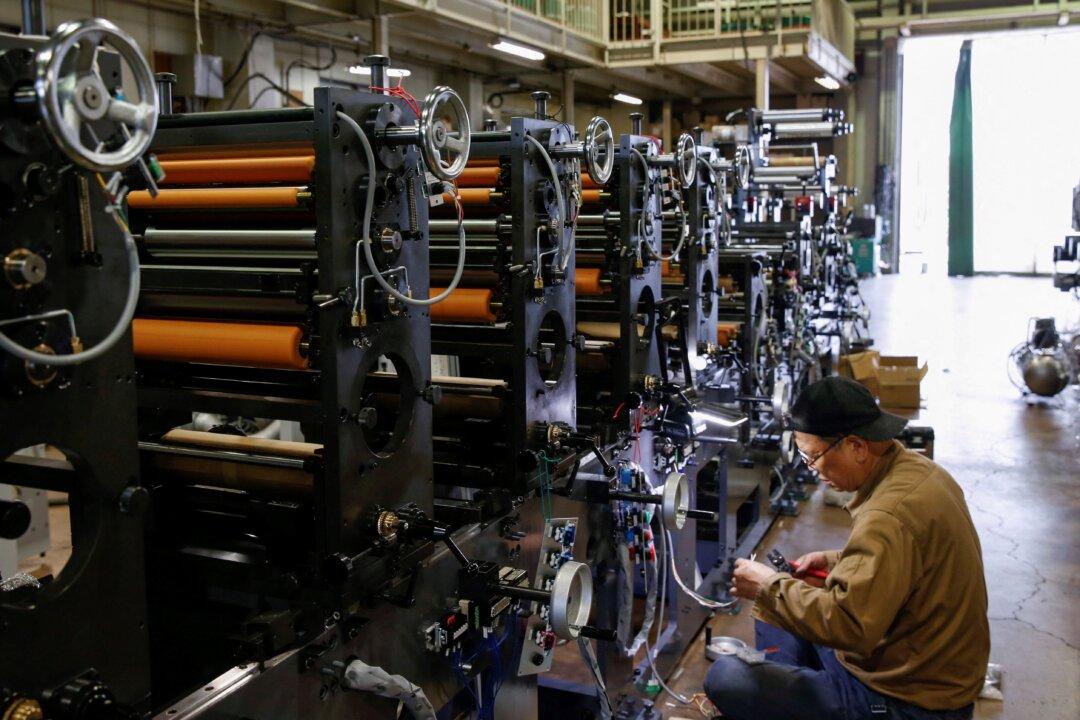TOKYO—Japan’s factory output shrank at the fastest pace in eight months in January as declining overseas demand took a heavy toll on key industries such as auto and semiconductor equipment.

A worker checks machinery at a factory in Higashiosaka, Japan, on June 23, 2022. Sakura Murakami/Reuters
|Updated:




